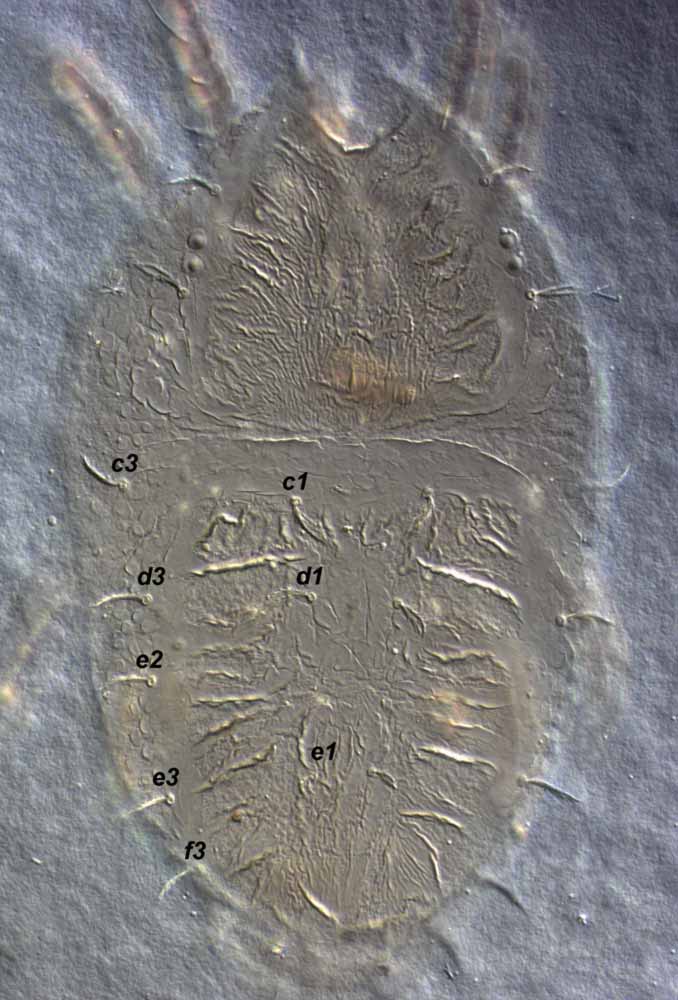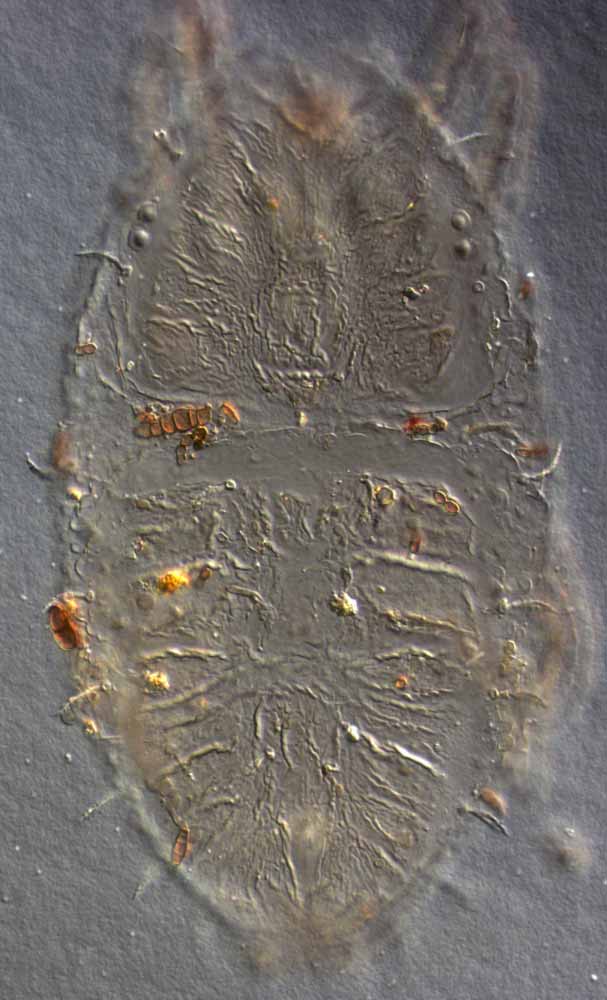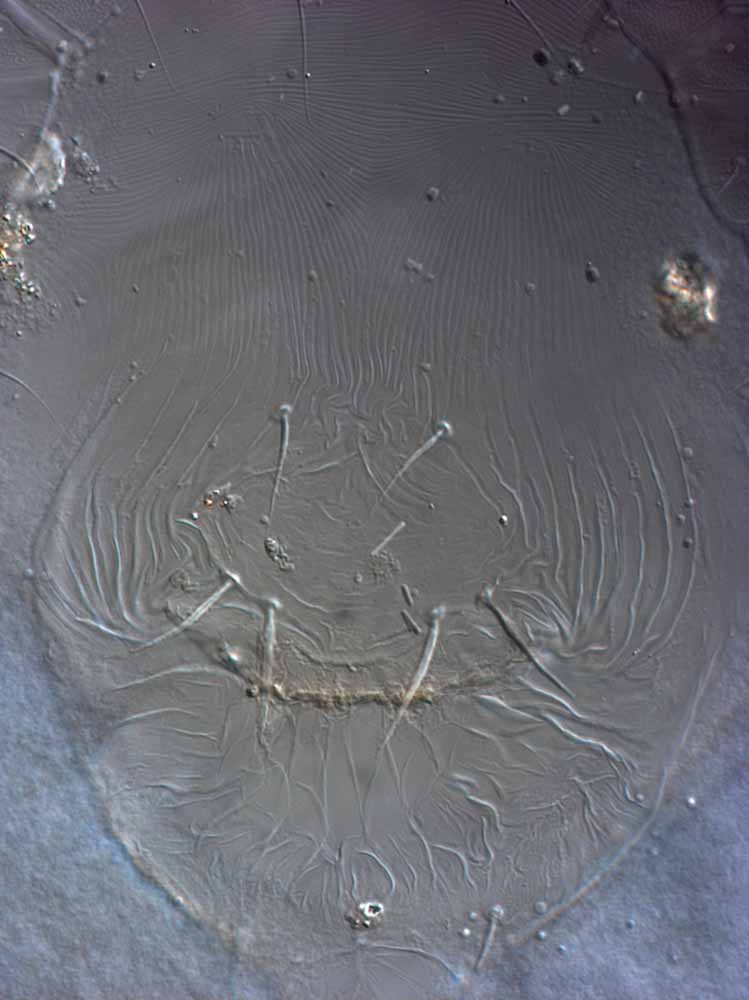Philippipalpus
|
Fig. 1. Philippipalpus nigraquercus sp. nov. Seeman & Beard, adult female dorsum. |
|
Fig. 2. Philippipalpus agohoi female dorsum, posterior setae h1-2 not in focus (type specimen). |
|
Fig. 3. Philippipalpus agohoi female dorsum (type specimen). |
|
Fig. 4. Philippipalpus agohoi female posterior venter. |
|
Fig. 5. Philippipalpus agohoi female venter, with detail of genital region (ps3 visible; oviduct extruded, obscuring ps1-2) (type specimen). |
Key characters
- c2 , d2, f2 absent (Figs. 1-2)
- h2 not elongate
- anterior margin of prodorsum with notch extending posterior to v2 (Figs. 1-3)
- ventral, genital and anal plates not developed (Figs. 4-5)
- 3 pairs ps setae (Fig. 4)
- 5 segmented palp
Similar taxa
Chaudhripalpus - e2 absent
Tegopalpus - e2 absent
Number of species
Four - P. agohoi; and three new species P. belah, P. flumaquercus, P. nigraquercus (Beard, Seeman and Bauchan 2014).
Authority
Corpuz-Raros
Distribution
The Philippines, and recently Australia (Beard et al. accepted Zootaxa).
Hosts
Allocasuarina littoralis, Casuarina cristata, C. cunninghamiana, C. equisetifolia (Casuarinaceae)
Colour
- red when alive
- eggs red
Remarks
This is a recently redescribed genus (see Beard, Seeman & Bauchan (2014).




